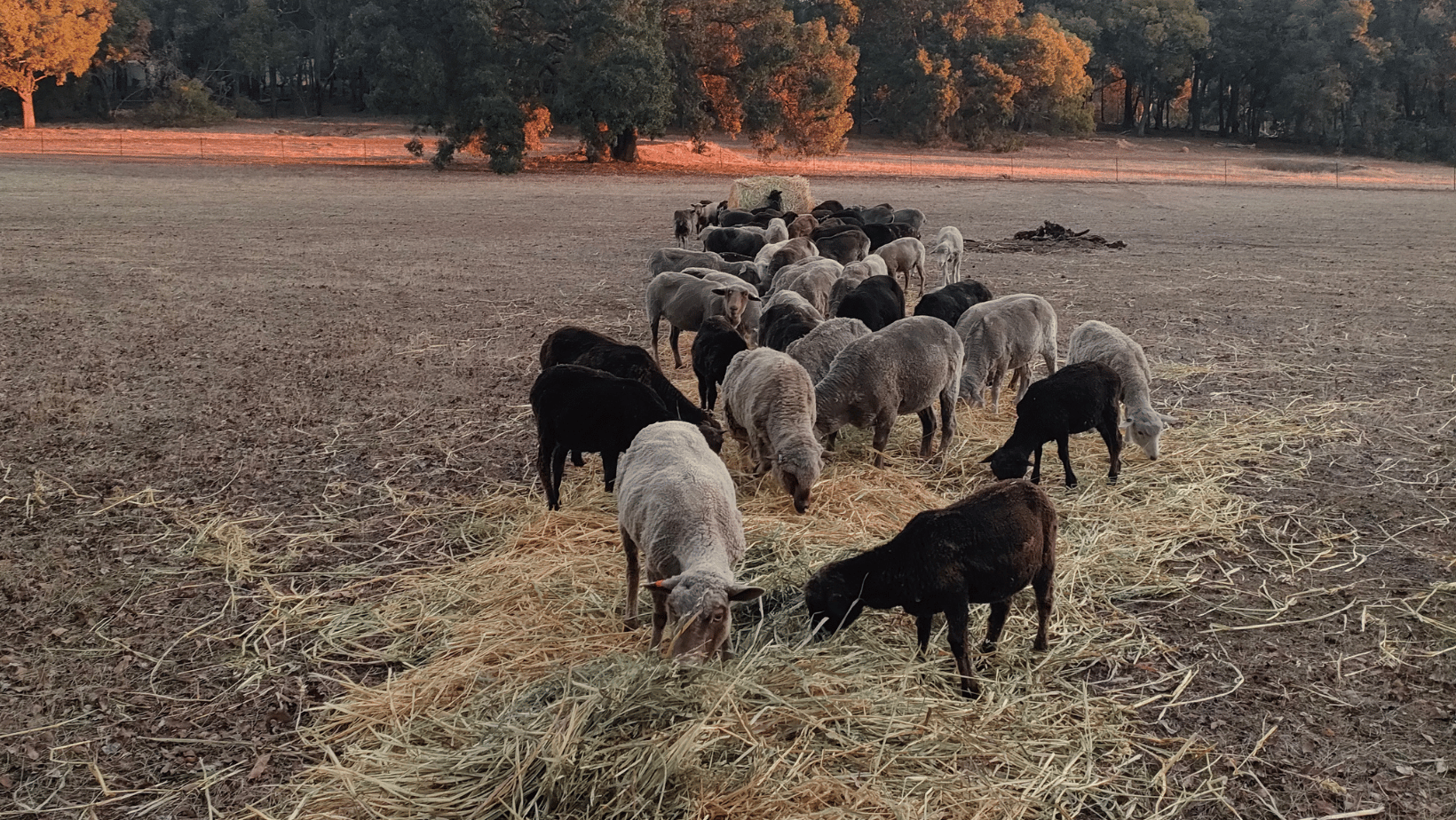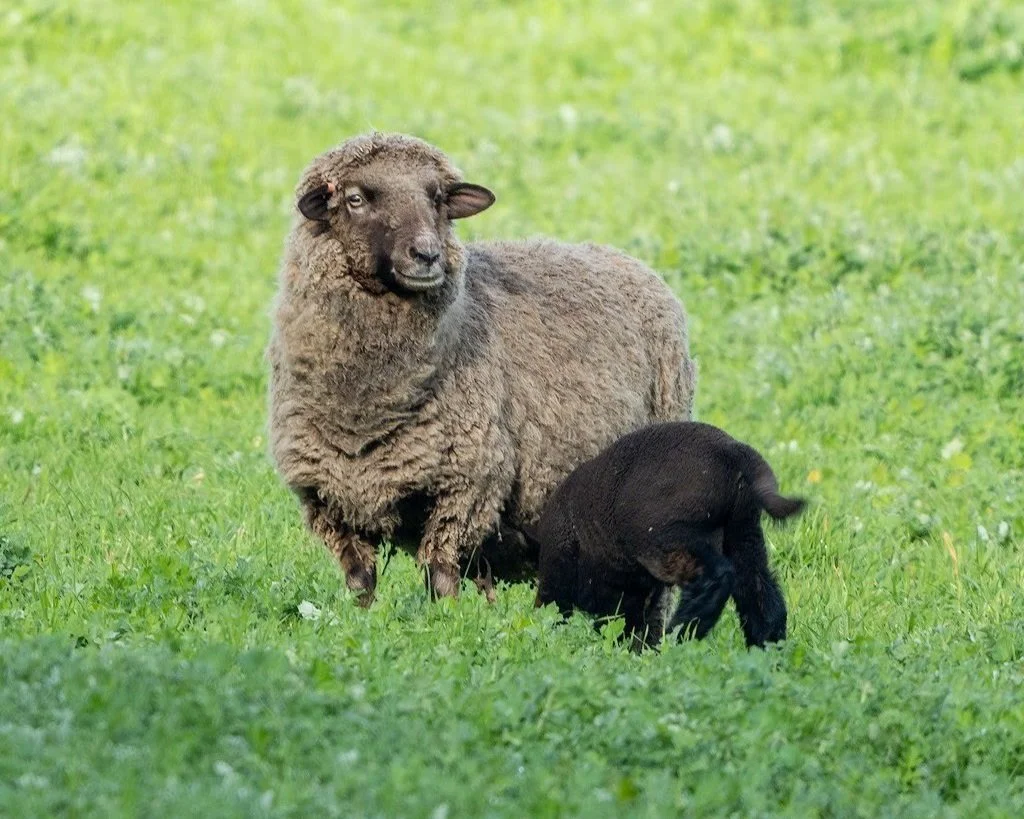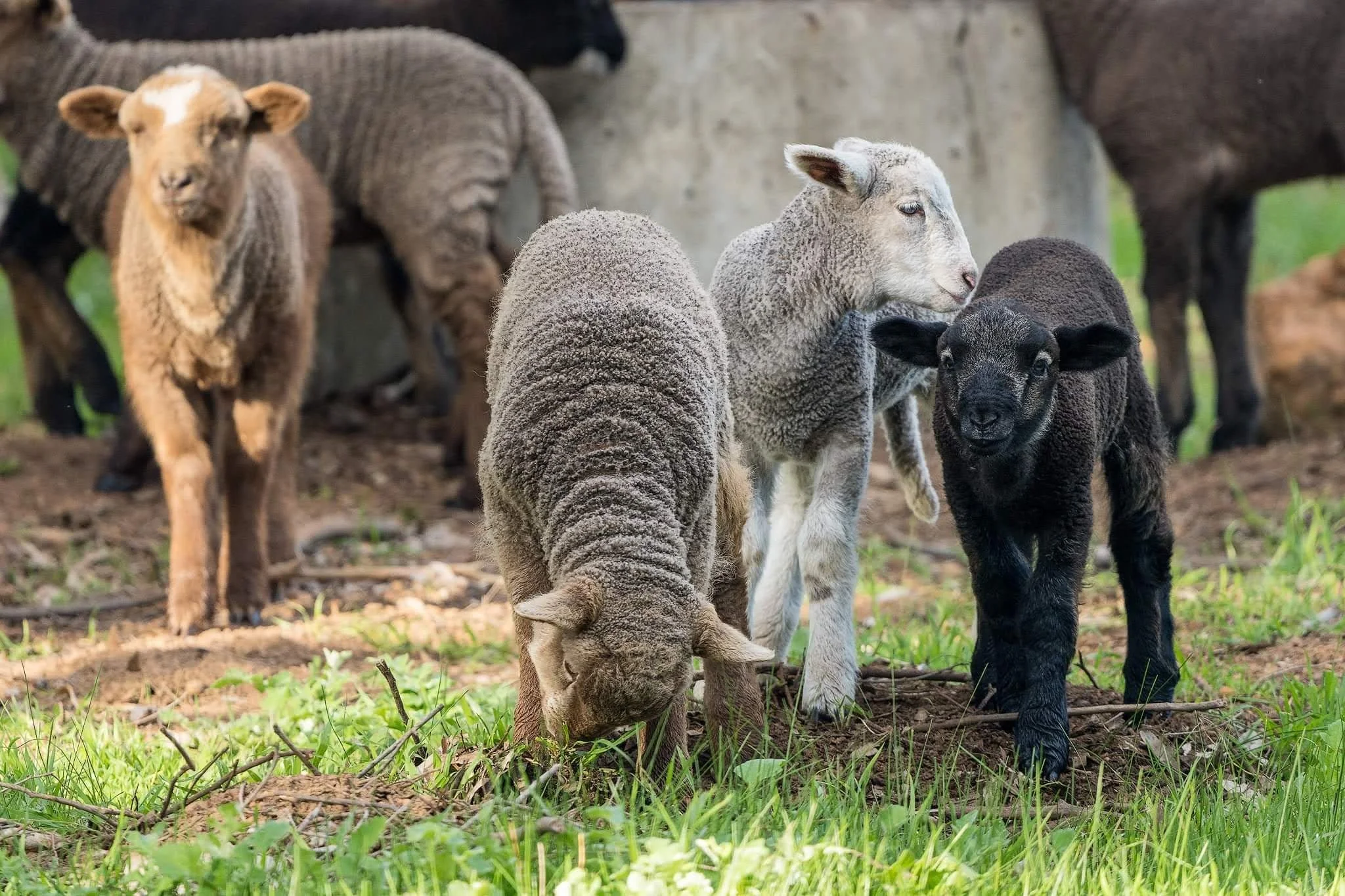
Master & Dame… what’s in the name?
Finding a name that was memorable, celebrated the history of coloured wool as well as defining the point of difference for our brand story was important. When many think of black sheep, the nursery rhyme “ Ba Ba Black sheep” will often come to mind.
The line starting One for the Master and one for the Dame…. caught our focus.
Wool, naturally black and coloured or white, can be for everyone.
Why coloured sheep
The fascination with black sheep started for me when I was a child, spending time on my grandparents’ farm. In a sea of white lambs, the black ones always caught my eye. Even back then, I was drawn to them.
However, I also learned early on that, in commercial wool production, different isn’t always welcome.
White wool can be dyed any colour, and with bulk processing and manufacturing, fabrics made from the fibre are uniform and replicable on a mass scale. Black or coloured wool, on the other hand, is seen as a flaw, a contaminant, something that lowers the value of the clip. So for generations, black sheep have been quietly bred out as a necessity. Today, many farmers haven’t seen a coloured lamb in years on their farms. The genetic trait mostly eliminated.
Luckily, small-scale breeders and fibre lovers continued breeding coloured sheep. Through them, I discovered that sheep don’t just come in white or black. There’s an entire palette, rich browns, soft greys, silvery tones and warm moorit shades, all naturally grown, all a bit magical.
Working with coloured sheep and wool isn’t simple. If white and black sheep are both kept, scrupulous shearing shed hygiene and separation is very important. It is harder to have coloured wool processed and the value of both the sheep and wool is low commercially, even when the fleece is of high quality. That’s why fewer people breed these sheep today. The ones who do, do it for love—for the beauty, the craft, and the desire to keep something rare alive.
That’s what drew us in. We fell for the sheep, for the wool, and for the story behind every fleece. We wanted to share that story with people who might not spin or knit, but who still appreciate natural, thoughtful products.
Because really, what could be more sustainable than sheep that grow their own colour? No dyes, no harsh chemicals, just wool as nature made it. Every bale is a little different, and that’s exactly what makes it special. To us, that’s not a flaw. That’s the charm.
Keeping a part of Australian farming history alive…
In our great grandparents’ day, farms were significantly smaller and there were many more of them. The population in rural areas much greater. By necessity, these farms needed to be quite self-sufficient, to feed and serve the farming families and the local communites along with supporting the economic growth of the nation. Most farmers would have horses, chickens, a house cow and perhaps pigs along with their sheep and cropping operations. They would trade and swap with their neighbours. Handicraft with spinning, knitting and sewing was also a necessity and there was often a small pet sheep flock with some coloured sheep. These were the sheep that grew the fleece for the loveliest knits and yarn that many fondly remember their mothers and grandmothers making for them.
Farms have grown vastly bigger now and rural communities very much smaller. Handcrafted items are now made only by those with a passion for the fibre arts and coloured sheep are becoming rare with our population moving away from the land. From hundreds of registered breeders in Western Australia in the 1970s we now have just a handful.
Many people nowadays may not have the time or inclination to wash wool, spin, knit or weave beautiful, traditional handcrafted items even though they still may greatly appreciate them and this is why we wanted to create products that showcase this naturally coloured fibre. From sheep that are truly unique and historically significant. If we don’t make their wool more accessible to more everyday people then perhaps we are at risk of losing them.
If we work to showcase naturally coloured wool and make it accessible to more people, then others will see the value of these natural products and interest will grow in these rare sheep. We hope to develop more quality products that show how naturally beautiful coloured wool can be used and still be Australian made.
Interesting facts about coloured sheep…
Coloured sheep come in many shades and patterns. These traits are genetic like hair and eye colour in people. The coloured gene is usually recessive which means that both parents must carry and pass on a recessive coloured gene for the offspring to have pigment or melanin in their skin and fleece. To be coloured the sheep must only have recessive genes. If only one recessive coloured gene is passed on from one parent and the other gene from the other parent is for white (no pigment) then the lamb will be white. This is because white wool is the dominant gene and will be expressed over colour.
If both parents are white but both carry the recessive gene then there is only a 1 in 4 chance of colour being expressed in the lamb but if both parents are coloured then all offspring will be coloured as the parents will only have the recessive coloured genes to pass on. Pattern and spotting are also genetic but on a different genes. A white sheep may have these pattern genes but you can’t see these traits in a white sheep as their white spots are lost with the rest of the fleece also being white.
Our sheep range in many hues from light soft blue grey, warm koala grey, charcoal and black, to many shades of brown (also known as Moorit), soft beige, through caramel, milk and dark chocolate.
Wool is subject to the elements of sun, rain and dust so as a sheep ages and grows their fleece the tips of the wool fade and become muted. Much like a white sheep they can look a little dirty and greyish as their wool grows longer. It is only when they are very young, or when you part the wool or shear the fleece that you see the richness of the colour beneath the tips or, in the case of a white sheep, the brightness of the white. Coloured sheep have pigmented skin as well so it can be challenging for the shearer to see where the wool meets the skin as it is not a pink colour beneath white fibre. The shearer will need to go slower and take care. Even their tongues can have the pigment and when they baa you see a dark tongue and gums.
Elemental exposure along with colour fade as a sheep ages result in fibre that is not black after processing but a brown or a grey colour depending on the fleeces you mix together.
Interestingly, before soil testing, some farmers would once keep a coloured sheep in their flocks as a nutritional indicator. Much like the rose bush at the end of a row in a vineyard to show early environmental signs letting the farmer know that the vines need feeding or treating. In a coloured sheep the pigment in the wool will show changes when certain minerals become lacking in their diets. When the farmer saw changes in the colour of the fleece, they would supplement these minerals for the flock and look at other aspects of health and nutrition. This pigment change in the fleece is very noticeable at shearing when sheep are moved from entirely different geographical area with different soils and diet.
Similar and yet very different to a having a flock of white sheep.
As each coloured sheep is unique in its appearance you get to know the individuals much better, even with a larger flock. You notice the different personalities and different social dynamics between them. Sheep like most animals have strong interpersonal relationships and you will see lifelong friendships form and family bonds remain. An example of this is when we take the breeding ewes and the elderly sheep out at certain times of year to give them extra love and attention, they are happy enough because they have other sheep with them but on returning to the main flock you will see them approached by all of their past lambs and their closest friends in welcome.
Lambing it is a delight with not only adorable babies but to see all the colours and patterns. You can pick out who is who much more easily. Lambs can appear to have multiple colours at birth as the guard hairs that help protect them as tiny lambs can also be in other colours. These guard hairs generally fall out as the lamb matures.
For our products we hand select each fleece and combine fleeces of a similar shade in wool bales. These bales are processed one at a time with each scoured (washed) and carded (combed) separately to create a unique ‘once off’ colour. No two bales will ever result in the exact same colour and as such each batch of products from these bales although similar will also be slightly unique in colour.


